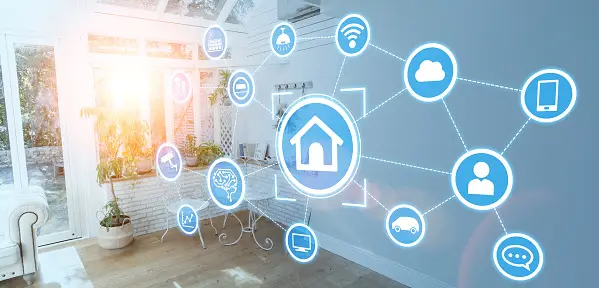Connecting the Dots: How to Create an IoT Ecosystem In 2024

Connecting the Dots: How to Create an IoT Ecosystem In 2024? In a world where connectivity is key, the Internet of Things (IoT) has emerged as a transformative force. As we step into 2024, the need for creating a robust IoT ecosystem becomes more apparent than ever. In this article, we’ll explore the intricacies of building an effective IoT network, connecting the dots to ensure seamless integration and functionality.
Understanding the Basics of IoT
At its core, IoT involves connecting various devices to the internet, enabling them to communicate and share data. From smart home devices to industrial sensors, the possibilities are vast. The interconnectedness of these devices forms the foundation of an IoT ecosystem, revolutionizing the way we live and work.
Evolution of IoT in 2024
The landscape of IoT is continually evolving, driven by technological advancements. The integration of artificial intelligence (AI) and machine learning enhances the capabilities of IoT devices, making them smarter and more intuitive. Furthermore, the rollout of 5G technology plays a pivotal role in ensuring faster and more reliable connectivity for IoT devices.
Key Components of an IoT Ecosystem
Creating a successful IoT ecosystem involves understanding and incorporating key components. Sensors and actuators capture and transmit data, connectivity protocols facilitate communication, cloud computing provides storage and processing power, and data analytics offer valuable insights.
Planning Your IoT Ecosystem
Before diving into the world of IoT, it’s essential to establish clear goals and objectives. Assessing your current infrastructure and considering budget constraints are crucial steps in the planning process.
Choosing the Right Devices
Selecting devices compatible with your IoT ecosystem is paramount. Pay attention to security features and scalability to ensure the seamless integration of devices into the network.
Connectivity Protocols for IoT
Wi-Fi, Bluetooth, and Zigbee are among the various connectivity protocols available for IoT devices. Choosing the right protocol depends on factors such as range, power consumption, and reliability.
Implementing Cloud Computing
The adoption of cloud computing in your IoT ecosystem facilitates efficient data storage and accessibility. Additionally, cloud services enhance the security of sensitive information.
Data Analytics in IoT
Data analysis is a cornerstone of IoT, providing valuable insights for decision-making. Real-time monitoring and analysis contribute to the efficiency and effectiveness of your IoT ecosystem.
Security Measures for Your IoT Ecosystem
Addressing security concerns is paramount in IoT implementation. Encryption, authentication, and regular security updates are essential to safeguard your network from potential threats.
Read More: Creating a Secure IoT Network: Tips for Home and Business In 2024
Ensuring Scalability
Future-proofing your IoT ecosystem involves planning for scalability. As the demand for connected devices grows, your network should adapt seamlessly to accommodate increased loads.
Challenges in Creating an IoT Ecosystem
Despite its numerous benefits, building an IoT ecosystem comes with challenges. Security and privacy concerns, along with integration complexities, require careful consideration and proactive measures.
Case Studies: Successful IoT Ecosystems
Examining successful IoT implementations by companies provides valuable insights. Learning from their experiences helps navigate potential pitfalls and optimize your IoT ecosystem for success.
Future Trends in IoT Ecosystems
Looking ahead, the integration of IoT with AI and augmented reality (AR) opens new possibilities. Embracing sustainable practices in IoT becomes crucial as we anticipate the trends that will shape the next decade.
Conclusion
Creating an IoT ecosystem in 2024 is not just a technological advancement; it’s a necessity. By understanding the basics, planning meticulously, and addressing challenges head-on, businesses and individuals can unlock the full potential of the IoT. Embrace the connectivity revolution, and witness the transformative power of a well-crafted IoT ecosystem.
FAQs : IoT Ecosystem
What is the Internet of Things (IoT)?
The IoT refers to the network of interconnected devices that can communicate and share data over the internet.
Why is creating an IoT ecosystem important in 2024?
The increasing reliance on connected devices and the evolution of technology make a robust IoT ecosystem essential for seamless integration and functionality.
What are the key components of an IoT ecosystem?
Key components include sensors, connectivity protocols, cloud computing, and data analytics.
How can security challenges in IoT be addressed?
Addressing security challenges involves implementing encryption, authentication, and regular security updates to safeguard the network.
What are the future trends in IoT ecosystems?
Future trends include integration with AI and AR, as well as a focus on sustainable practices in IoT.











